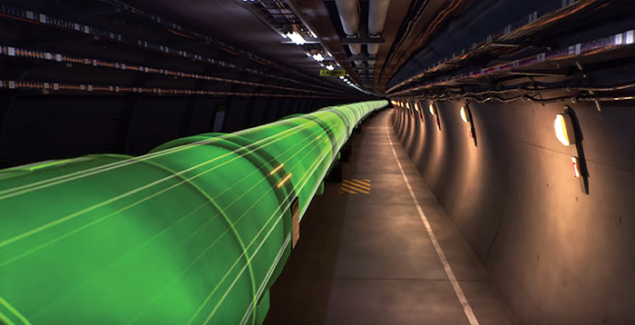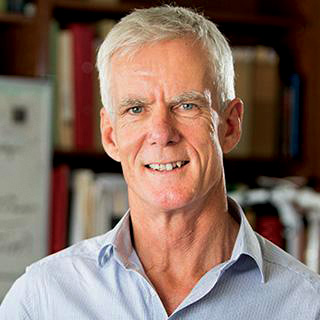
With each new high-energy accelerator, a question arises: is this the largest facility that we can conceive of being built? Although accelerator experts have never lost their astounding capacity for innovation when it comes to building the next collider, it is the necessary political will required to fund multi-billion-dollar science projects that remains the big unknown. Yet, giant facilities have succeeded in the past.
CERN’s Large Hadron Collider (LHC) was Europe’s answer to a long-standing transatlantic competition for the high-energy frontier. The US Superconducting Super Collider (SSC) had been designed to operate at 40 TeV – an enormous step – while the LHC was proposed at lower energy to fit into the existing LEP tunnel, compensating with higher luminosity. The cancellation of the SSC in 1993 ensured that the LHC would take up the high-energy mantle. Meanwhile, the 2 TeV Tevatron at Fermilab continued operations, giving the LHC real competition in the search for the Higgs boson.
Overcoming many challenges to the LHC’s construction, CERN wrestled back the energy frontier with magnificent success, crowned in 2012 by the Higgs-boson discovery. The machine and its approved high-luminosity upgrade will maintain Europe’s leadership into the 2030s. But what then?
The proposed Future Circular Collider (FCC) aims to keep CERN at the energy frontier via a 100 km-circumference ring capable of housing a 100 TeV proton collider (see CERN thinks bigger). It may well proceed via an intermediate 90–365 GeV electron–positron collider (FCC-ee), bringing incredible precision to measurements of the Higgs boson and backing up the discovery at the LHC in much the same way that LEP did after the discoveries of the Z and W bosons at the SppS.

Whilst CERN physicists and partners wish for continued leadership from their stable base, global competition is tilting towards Asia, where two major proposals are progressing towards approval: the 250 GeV International Linear Collider (ILC) in Japan, and the 250 GeV Circular Electron-Positron Collider (CEPC) in China (see China’s bid for a circular electron–positron collider). The ILC requires major international participation, whilst CEPC (which, like FCC, could proceed to a high-energy proton collider) will be largely nationally resourced.
In principle, FCC-ee and the CEPC are direct competitors. For that matter the ILC is too, and CERN is also developing the Compact Linear Collider (CLIC) with a much higher energy reach. All would produce a very large sample of Higgs bosons in a clean environment. Uniquely, linear machines can in principle be upgraded by extending their length or increasing the gradient of their accelerating cavities. Circular machines, with the radius fixed at construction, require stronger magnets and increased power to push up their energy.
The existence of the Chinese and CERN bids is reminiscent of the competitive LHC–SSC era. Again, while the physics potential of each machine is similar, their political, economic and social environments are quite different. This time it is the new economic power of China, with a government focussed on international leadership in a range of endeavours, that is impacting future planning in the field.
The ILC and CEPC have such different development pathways – and with China increasing the size of the international high-energy physics pie, not just re-slicing it – that both could be important. For a 100 TeV proton collider, perhaps the massive development and production of the necessary superconducting magnets can be limited to one facility, freeing up international resources to explore more compact and efficient acceleration techniques for the future. CERN clearly has the experience and leadership in high-energy proton colliders.
The lesson from the LHC–SSC story is the need for persistence, international collaboration and endorsement, stability, innovation and a long-term vision – characteristics that underpin CERN’s successes. In Asia too, where long-term vision is the cultural norm, effective decadal planning is expected and recognised as critical amongst high-energy physics leaders. Surely international resources can be optimised to ensure our field remains active and relevant in the decades to come.







